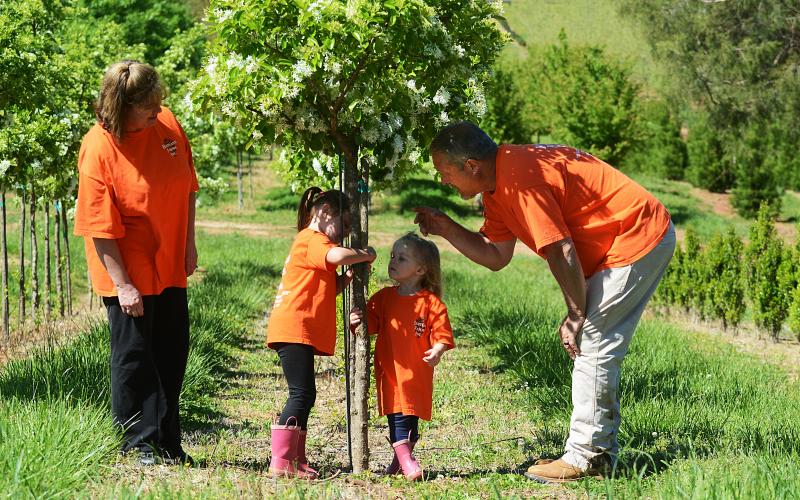Every good looking yard needs some color.
Flowers and blooming bushes are the go-to choices for many gardeners looking to make a splash, but trees that bloom can contribute to the drama of a colorful garden. But choosing the right flowering tree is important if you want to enjoy their beauty for years.
Gary Waters, owner of Hartland Farms, knows that well. Hartland Farms, a mostly wholesale tree farm Waters owns with his wife Teresa, began in 2000 after the couple operated a garden center nursery in Braselton for the previous 18 years. Their son now runs the garden center while Gary and Teresa grow row after row of a numerous variety of trees on about 500 acres here in Hart County.
While they sell more oaks, maples and other popular hardwood varieties than anything else, flowering trees certainly have their fans, Waters said. Cherry trees are one of the most popular.
“We grow a lot of different kinds of cherry trees,” Waters said. “There are several different varieties.”
And all of them burst with color in the spring. A Yoshino Cherry tree, for example, is one of the first trees to burst with showy blooms each spring. Weeping cherries, Kwanzan, Okame and royal Japanese cherries are other varieties that are just as showy.
Another popular blooming tree is a Southern staple, dogwoods. Waters said he grows numerous varieties of dogwoods too, but planting them requires some thought. Timing is everything. Don’t plan to plop a dogwood in the ground in the middle of summer, for example, Waters said.
“The best time to be digging to plant for spring is in October, November, December, to February,” Waters said. “When the trees are dormant, without any leaves on them, is the best time to plant them.”
Some dogwoods also don’t like too much sunlight. Dogwoods are understory trees, Waters said, which means they usually like to be surrounded by other, larger trees and thrive on the edge of wooded areas. Partial shade keeps them at their healthiest.
But like cherries, dogwoods bloom earlier in the spring and don’t hold their blooms for longer than a couple of weeks, which is another aspect to consider when planting flowering trees. Another showy tree, the Jane magnolia, or tulip tree because its blooms look like tulips, for example, bursts with dramatic color, but only for a short time. A late frost or dip into cooler temperatures, Waters noted, will quickly make a Jane magnolia drop its blooms.
So keeping colorful trees blooming in your yard into the summer may require a little bit of variety. Waters said crepe myrtles are very popular and bloom into the summer. Unlike earlier bloomers, the unpredictable nature of Georgia’s spring weather has less impact on the blooming schedule of crepe myrtles.
“With Georgia weather, the later bloomers are the best,” Waters said.
The size and shape of a blooming tree, just like with any plant in a garden, must be considered as well. Planting a cherry tree too close to a house or other trees may not allow it to grow and flourish so that it produces its best blooms.
The life expectancy of the trees is also something to consider. Many of the flowering trees don’t grow as large or as long as maples or oaks. Waters said a lot of them, like many cherry varieties, live only a couple of decades.
Whether it is an American fringe tree, a dogwood, any variety of cherry or a magnolia, there are plenty of ornamental flowering tree options from which to choose to make your yard look its best.

